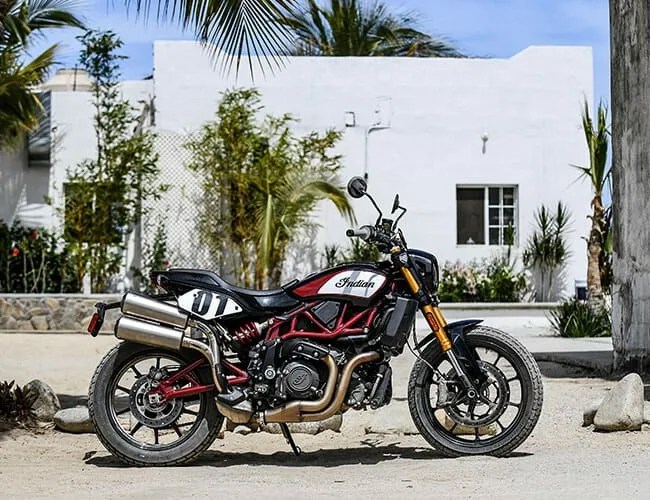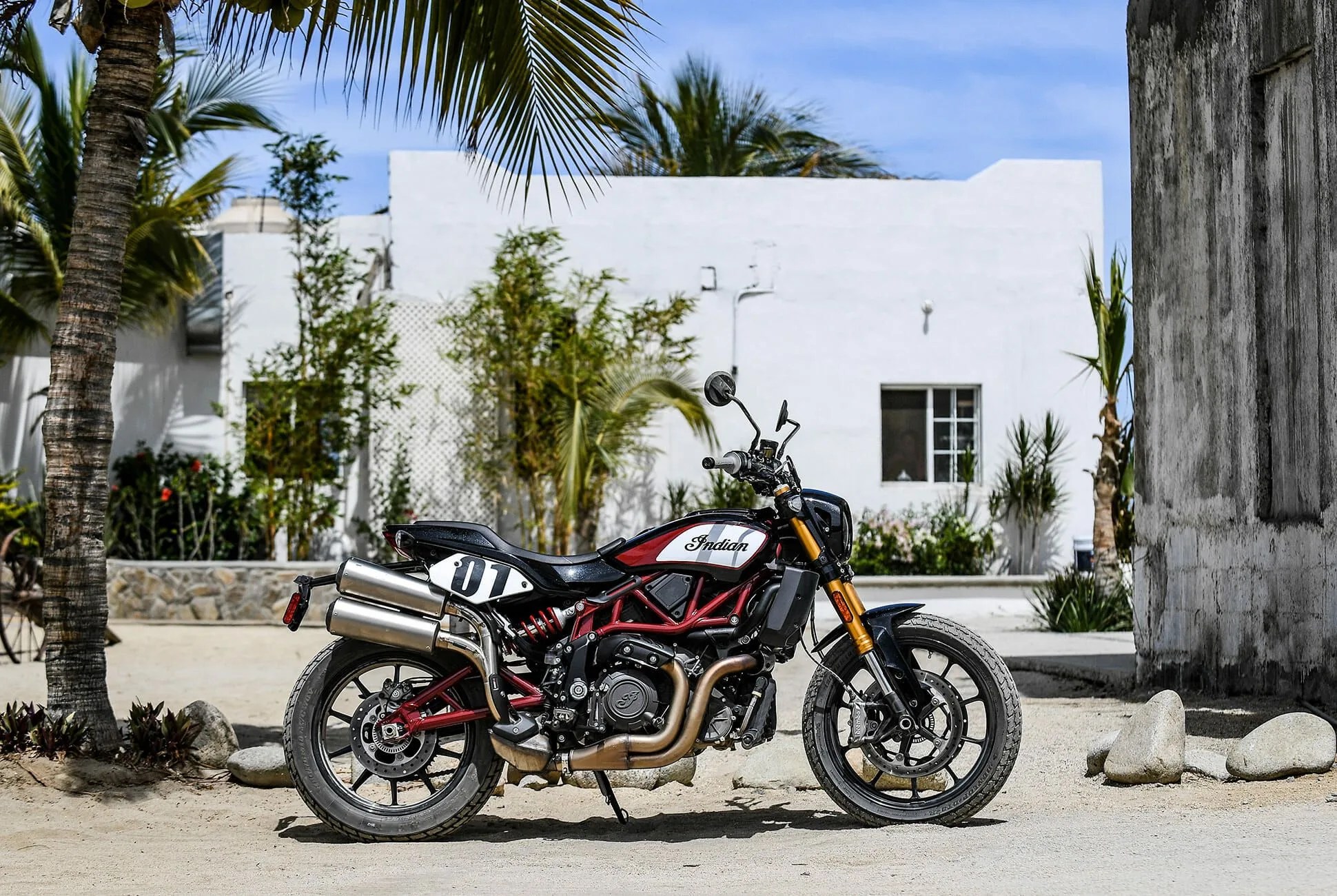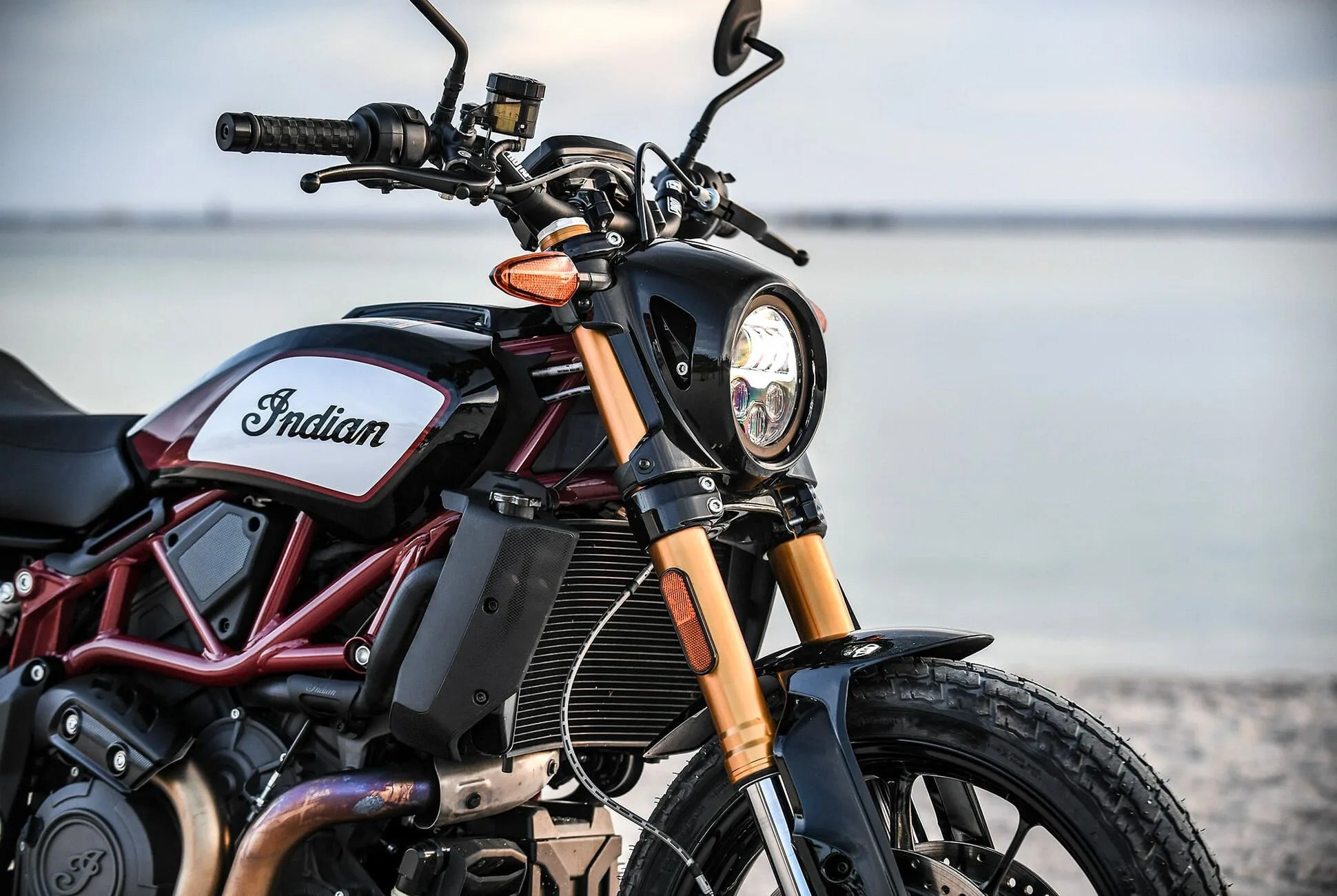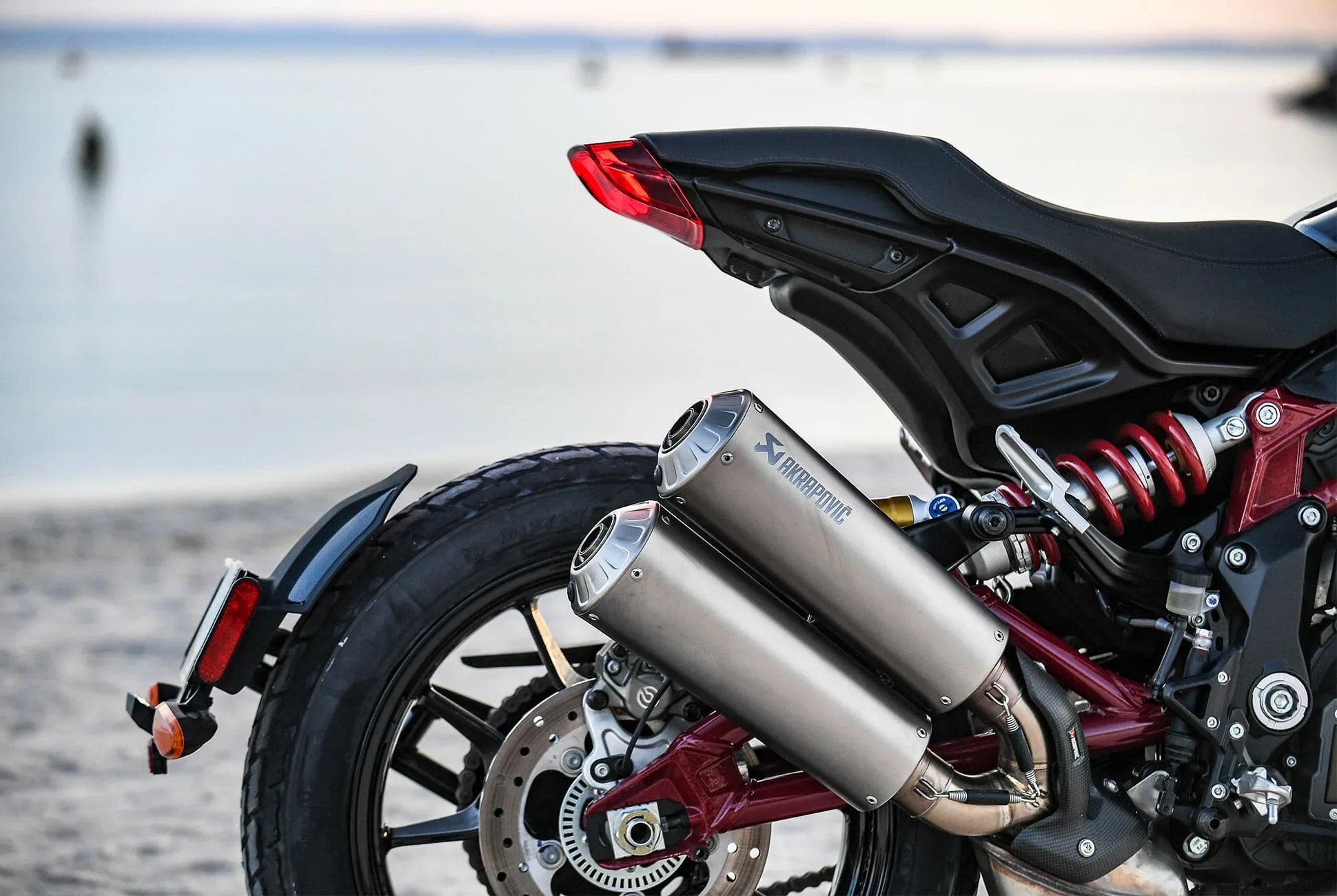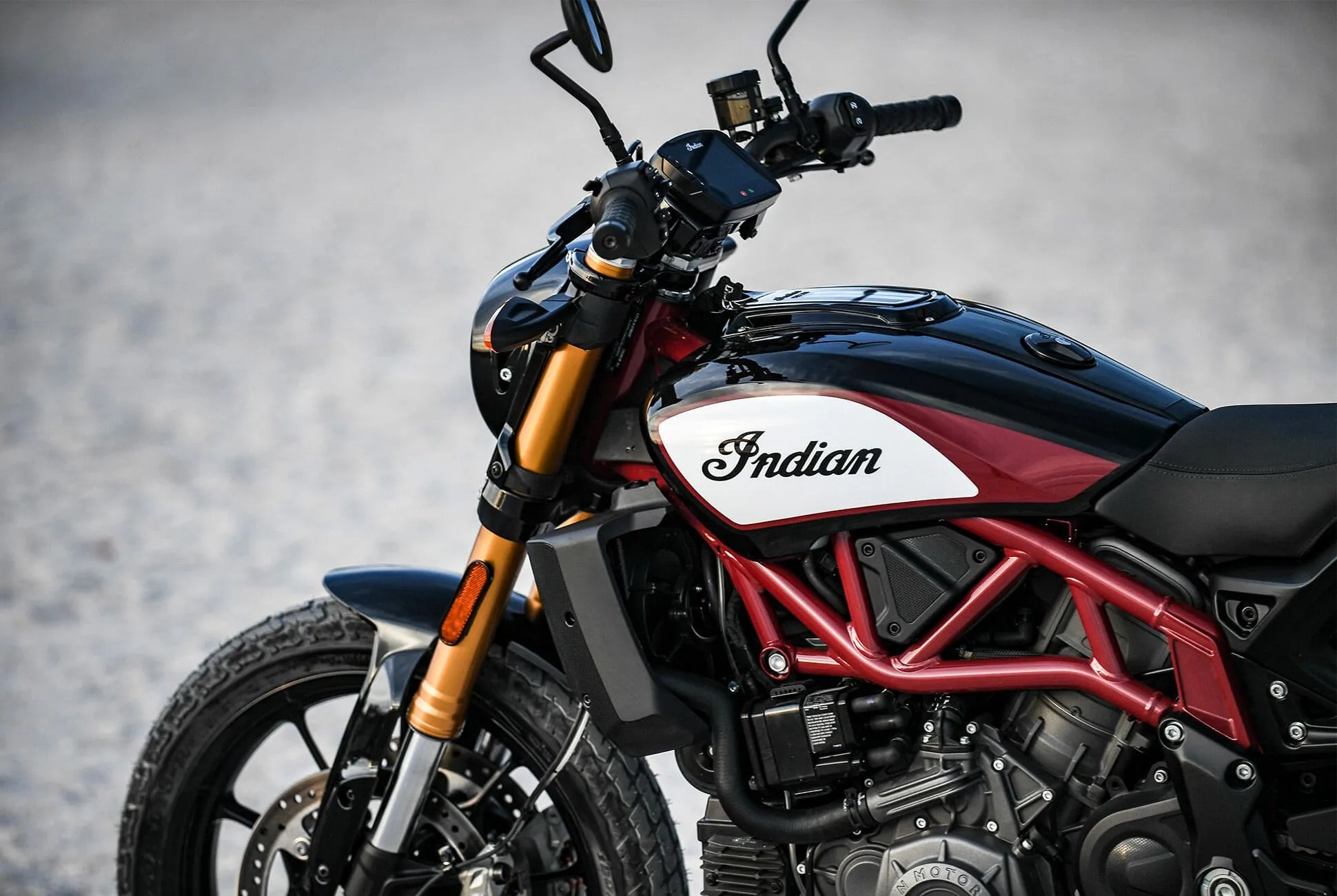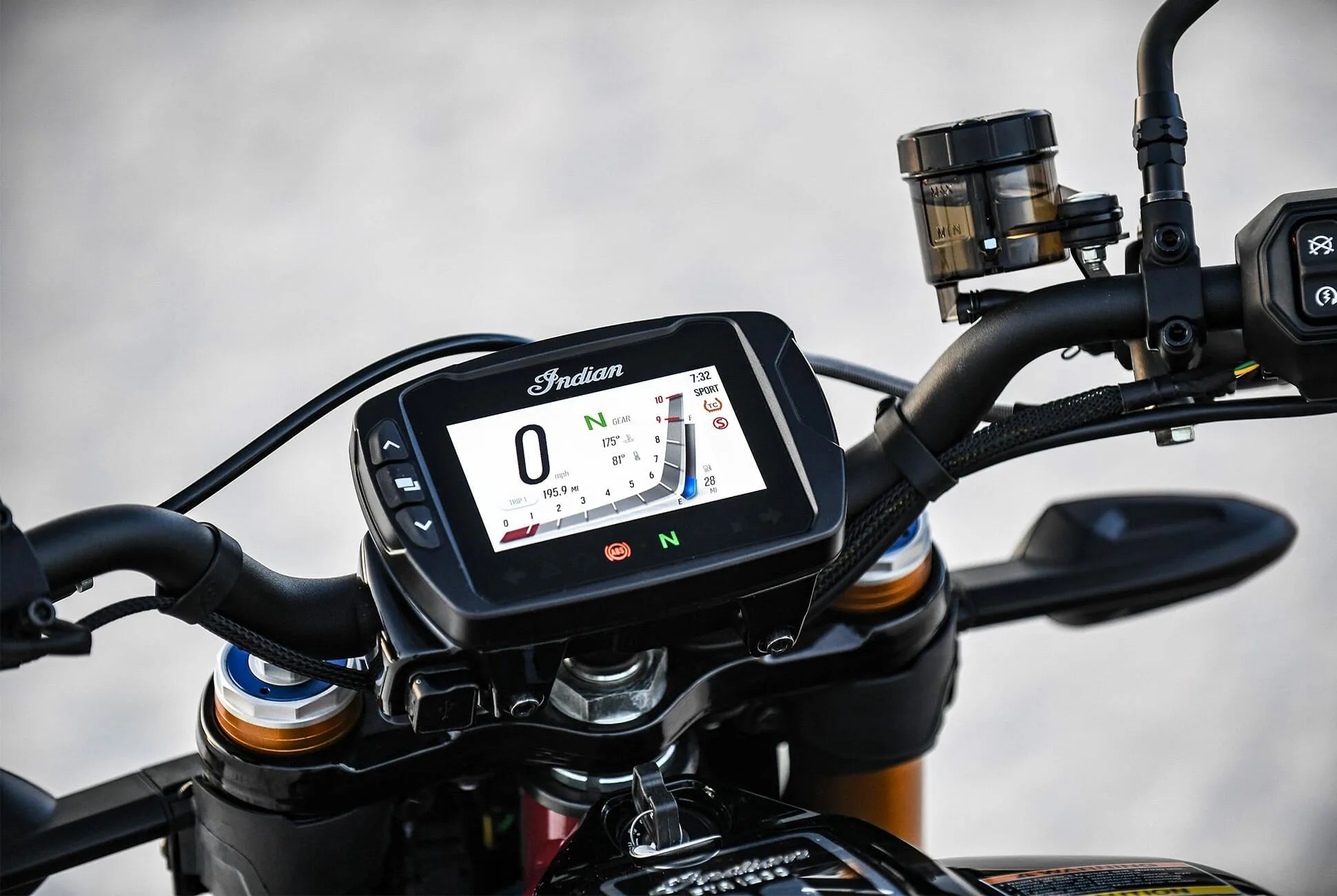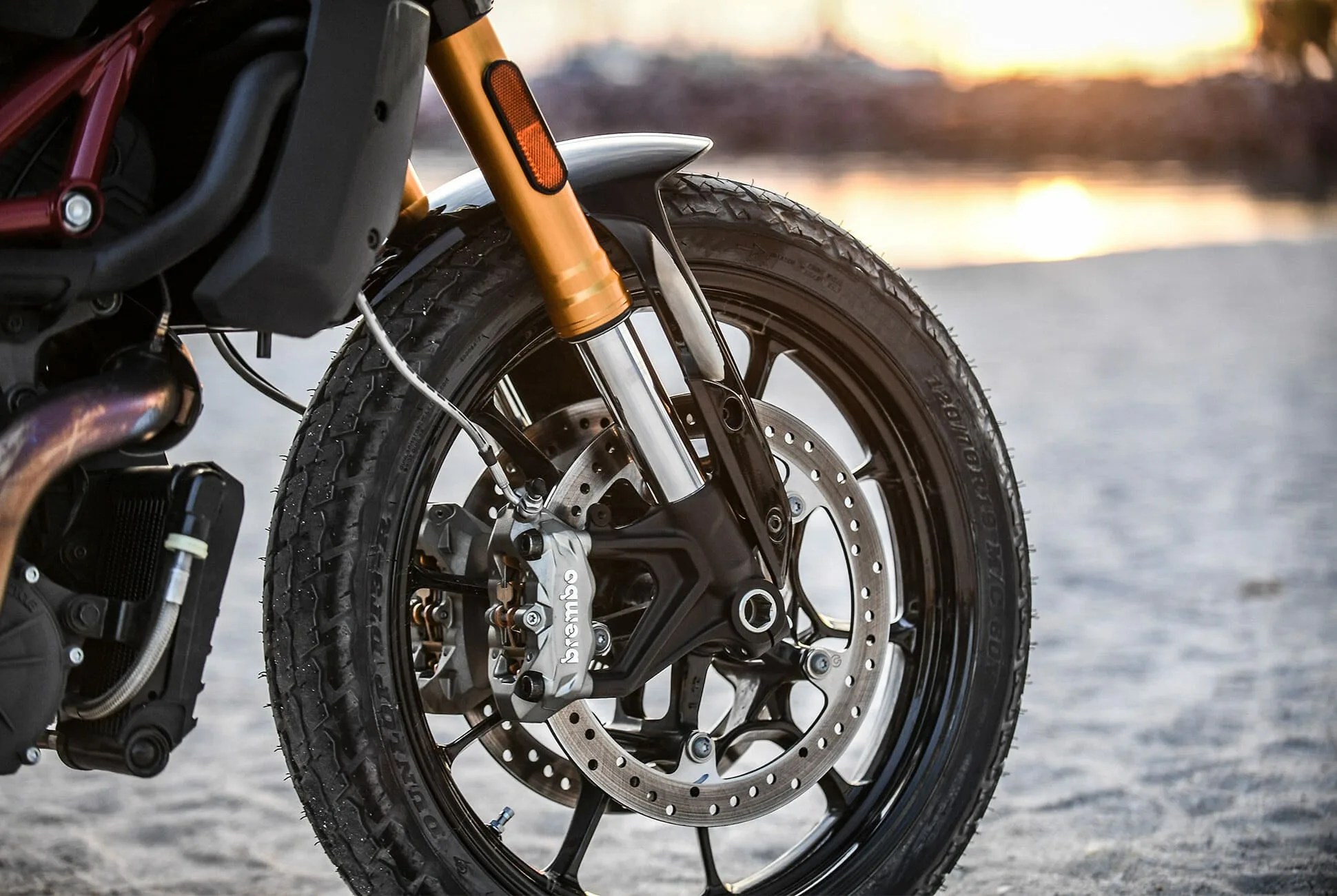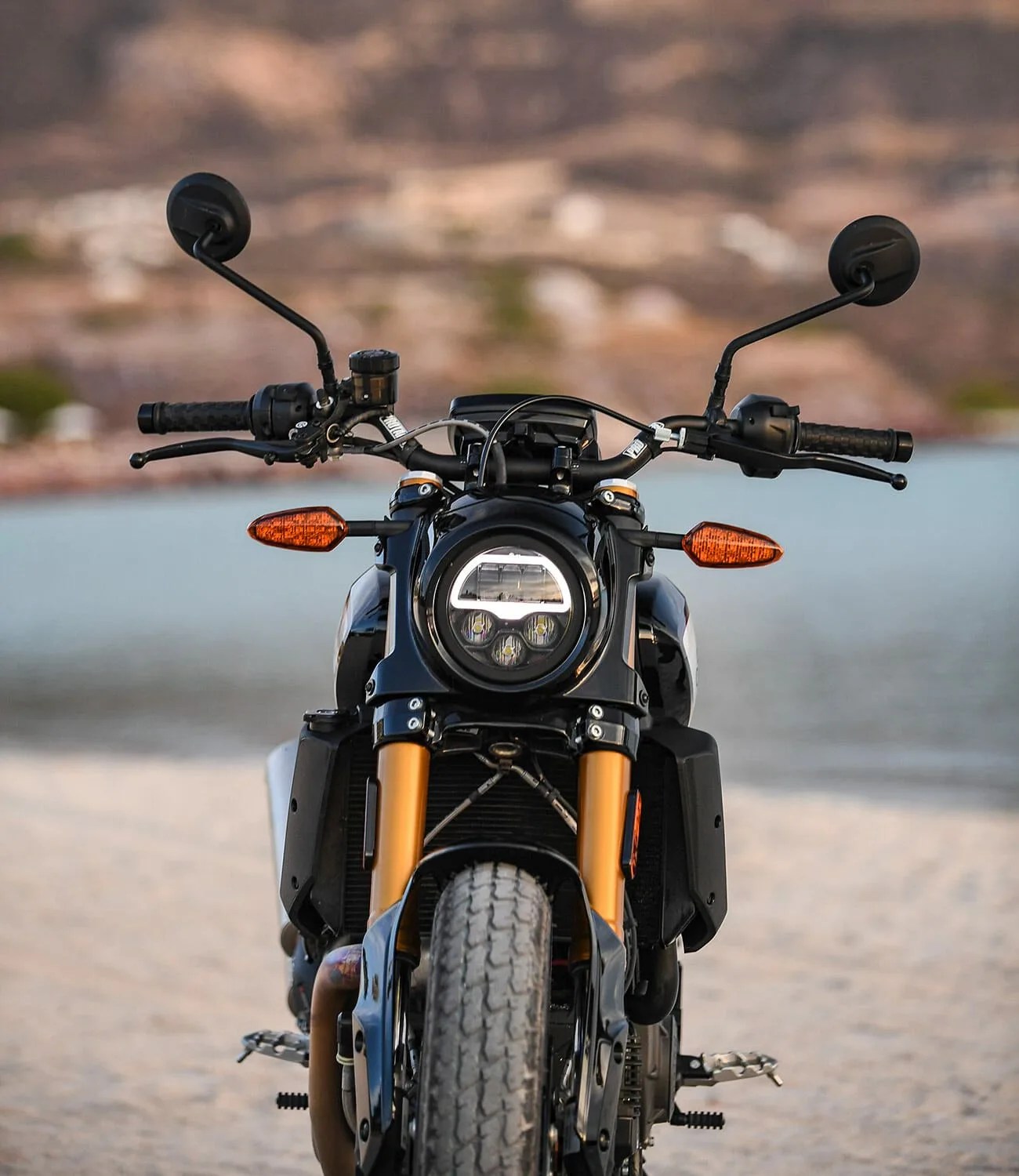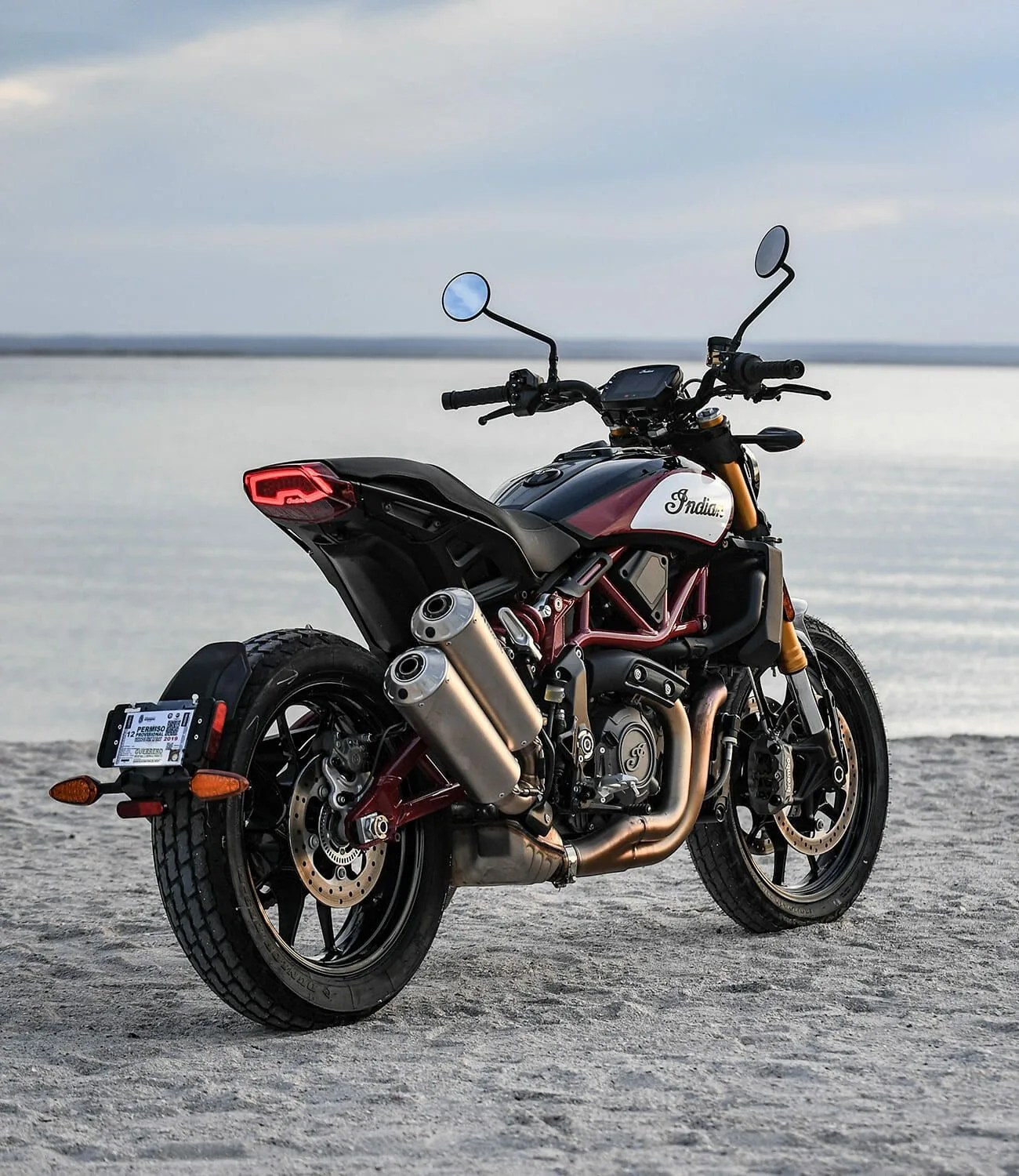6 photos
Ever since its 2011 resurrection by Polaris Industries, Indian Motorcycles has focused on large, beefy cruisers for the Crosby, Stills and Nash set. But with an aging customer base, it’s only logical that Indian would be looking to grow its appeal — and the much-anticipated FTR 1200 is the Minnesota company’s first concentrated effort at empire expansion. Tapping the American motorcycle brand’s rich history in flat track racing — its infamous Wrecking Crew team claimed championships in the harrowing sport for three consecutive years from 1951 to 1953 — Indian’s new FTR 1200 is based off their FTR750 racing bike. That’s rather appropriate: Indian’s Jared Mees has mirrored the Wrecking Crew’s success by winning back-to-back championships in 2017 and 2018 on the back of a FTR750.
The Good: The FTR 1200 benefits from being Indian’s first clean sheet design in half a decade; it’s a well-engineered machine from headlamp to tailpipes. Indian engines are known for their power, and the FTR 1200’s liquid-cooled 1203-cc V-Twin is no exception; the new configuration optimizes airflow for additional power and torque, enabling it to eclipse competitors like BMW’s R Nine T. The clutch is light and engages the quick-shifting six-speed sequential transmission with ease. And the amount of engineering work spent on optimizing balance and weight distribution is clea from the first time you climb aboard.
Who It’s For: The FTR 1200 was conceived to expand Indian’s reach, with Europe and Japan as major target markets. For this reason, Indian worked closely with its Polaris sister company SwissAuto in developing the bike, to make sure it appealed to European customers whose playgrounds are much different than the roads that burly cruisers like the Chief and Roadmaster call home. Meaning the FTR 1200 has to handle corners; agility, grip and balance are a priority. Moreover, the flat-tracker has to appeal to the aesthetics of a customer who’s cross-shopping bikes like the BMW R Nine T, Triumph Bonneville and Thruxton, and Ducati Scrambler 1100.
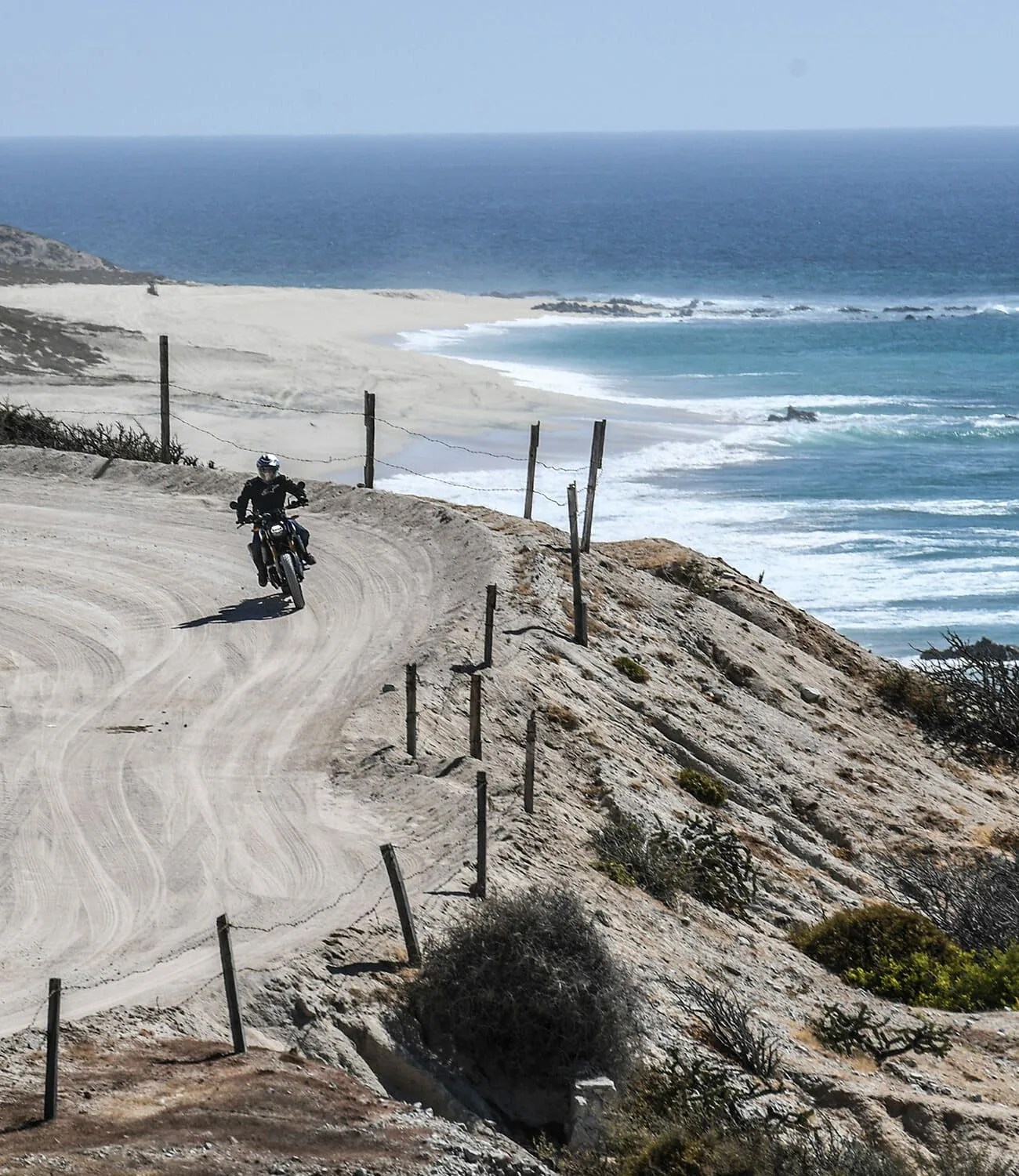
Watch Out For: The obvious ding on the FTR 1200 is cost versus its Japanese competitors, but it’s still competitive with the price of European rivals. Other than that, the only weakness I encountered with the FTR 1200 was when I had to ride some 60 miles on dirt connecting several tiny surfing pueblos. There were no paved streets so Indian took us on what they thought would be packed fire roads, only to discover that these gutted paths were littered with patches of deep sand, resulting in several riders dropping their bikes. But, honestly, no one should be taking a nearly 500-pound street bike on deep, dune-like sand. On hard-packed dirt, it should be noted, the bike lived up to its flat track roots just fine.
